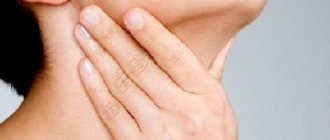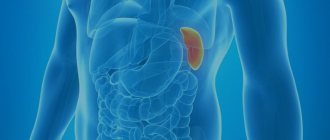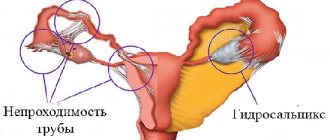The appearance of fatty acids in the stool indicates the development of a disease called steatorrhea. When the patient defecates, there are clearly visible parts of fat. The patient experiences frequent urges to go to the toilet. The stool is greyish in color and quite abundant.
The patient often suffers from diarrhea, less often constipation. Whatever the consistency of the feces, an oily residue remains on the surface of the toilet after bowel movements, which is quite difficult to wash off. Fatty acids in stool are the main symptom of steatorrhea.
What may affect the results
- Failure to follow nutritional recommendations, use of an enema, or performing a fluoroscopic or endoscopic examination shortly before the test.
- Violation of the rules for collecting stool, including the use of a non-sterile container for collecting biomaterial or collection directly from the toilet, as a result of which foreign microorganisms from urine, genital secretions, water from the toilet, etc. entered it.
- Failure to comply with the conditions for storing and transporting feces (biomaterial was delivered to the laboratory after the maximum established time from the moment of collection).
If the result of the coprogram seems incorrect to you, it is better to take the test again, adhering to all the recommendations for preparation and collection rules.
References
- Azer, S., Sankararaman, S. Steatorrhea. Treasure Island (FL): StatPearls Publishing, 2021.
- Bijoor, A., Geetha, S., Venkatesh, T. Faecal fat content in healthy adults by the 'acid steatocrit method'. Indian J Clin Biochem., 2004. - Vol. 19(2). - P. 20-2.
- Kamath, M., Pai, C., Kamath, A. et al. Comparing acid steatocrit and faecal elastase estimations for use in M-ANNHEIM staging for pancreatitis. World J Gastroenterol. — 2021. — Vol. 23(12). - P. 2217-2222.
Coprogram, general stool analysis
You can submit a coprogram at the nearest INVITRO medical office.
A list of offices where biomaterial is accepted for laboratory research is presented in the “Addresses” section. Interpretation of study results contains information for the attending physician and is not a diagnosis. The information in this section should not be used for self-diagnosis or self-treatment. The doctor makes an accurate diagnosis using both the results of this examination and the necessary information from other sources: medical history, results of other examinations, etc.
Symptoms of steatorrhea
Long-term removal of fats from the body along with feces affects the condition of all systems and organs.
The main symptoms are frequent urge to defecate, diarrhea with copious loose stools. Constant diarrhea leads to dehydration of the body, with all its inherent signs (dry skin, constant thirst, etc.). Feces have an oily consistency, are greasy, and are difficult to wash off with water. These symptoms include nausea, heartburn, belching, bloating and rumbling in the intestines, and dry cough. Less commonly, pain appears in the upper abdomen.
Steatorrhea is accompanied by diarrhea, frequent bowel movements, and dyspepsia
In the absence of timely adequate treatment for the disease that caused steatorrhea, disorders of the cardiovascular, endocrine, genitourinary and nervous systems may develop, which is caused by a secondary disorder of protein metabolism. A decrease in protein content occurs for several reasons: cavity digestion and protein absorption are impaired. Also, with malabsorption, the permeability of the intestinal barrier often increases and protein excretion occurs with loss through the intestines.
Compliance with the rules of preparation and collection technique affects the reliability of the lipid profile result.
Moderate protein losses occur with malabsorption of any origin. In this case, the patient complains of general weakness and decreased performance. Protein metabolism disorders lead to a progressive decrease in body weight, a decrease in the amount of total protein and albumin, ascites, and hypoproteinemic (protein-free) edema.
Steatorrhea is also accompanied by vitamin deficiency. The development of hypovitaminosis is explained by impaired absorption in the intestines, as well as the property of a number of vitamins to be absorbed only in the presence of fats. Severe malabsorption is accompanied by impaired metabolism of almost all vitamins, but clinically pronounced hypovitaminosis appears quite late. Deficiency of B vitamins appears earlier than others. The absorption of fat-soluble vitamins - A, D, E, K - is significantly impaired. These vitamins normally have the same absorption mechanisms as triglycerides. Their absorption changes with the inferiority of the bile micelle (chronic biliary insufficiency, dysbiosis), increased hydrostatic pressure in the intestinal lymphatic system (Whipple's disease), and impaired metabolism of enterocytes.
Hypovitaminosis can have the following manifestations:
- dizziness;
- pain in the spine and joints;
- convulsive conditions;
- swelling;
- dryness and pallor of the mucous membranes;
- skin itching;
- decreased visual acuity;
- dullness and brittleness of hair, peeling nails;
- glossitis, stomatitis (including angular), looseness and bleeding of the gums.
Absorption of fat-soluble vitamins occurs predominantly in the small intestine, therefore, in pathological conditions accompanied by atrophy of the mucous membrane of the small intestine, the process of their assimilation is disrupted. At the same time, the presence of pancreatic lipase for the absorption of this group of vitamins is not necessary, therefore, with pancreatic insufficiency, there is usually no vitamin deficiency.
In the absence of timely adequate treatment for the disease that caused steatorrhea, disorders of the cardiovascular, endocrine, genitourinary and nervous systems may develop, which is caused by a secondary disorder of protein metabolism.
Despite the absence of specific symptoms of hypovitaminosis, one must keep in mind that vitamin E is one of the most powerful antioxidants, vitamin D regulates the absorption of calcium in the intestines, and vitamin K is a blood clotting factor, so even their hidden deficiency must be corrected.
Normal values
| Index | Meaning |
| Macroscopic examination | |
| Consistency | Dense |
| Form | Decorated |
| Color | Brown |
| Smell | fecal, unsharp |
| pH | 6 – 8 |
| Slime | Absent |
| Blood | Absent |
| Leftover undigested food | None |
| Chemical research | |
| Reaction to occult blood | Negative |
| Reaction to protein | Negative |
| Reaction to stercobilin | Positive |
| Reaction to bilirubin | Negative |
| Microscopic examination | |
| Muscle fibers with striations | None |
| Muscle fibers without striations | units in the preparation |
| Connective tissue | Absent |
| Fat neutral | Absent |
| Fatty acid | Absent |
| Fatty acid salts | insignificant amount |
| Digested plant fiber | units in the preparation |
| Undigested plant fiber | units in the preparation |
| Intracellular starch | Absent |
| Extracellular starch | Absent |
| Iodophilic flora is normal | units in the preparation |
| Pathological iodophilic flora | Absent |
| Crystals | None |
| Slime | Absent |
| Columnar epithelium | Absent |
| Epithelium is flat | Absent |
| Leukocytes | None |
| Red blood cells | None |
| Protozoa | None |
| Worm eggs | None |
| Yeast mushrooms | None |
Decoding indicators
Consistency Liquid feces may indicate overly active intestinal motility, colitis, or the presence of protozoal invasion.
Too tight stools indicate excessive absorption of fluid in the intestines, constipation, and dehydration.
Foamy stool occurs when the pancreas is insufficient or the secretory function of the stomach is impaired.
Pasty feces may indicate dyspepsia, colitis, or accelerated evacuation of feces from the large intestine.
Form
Pea-shaped feces occur with hemorrhoids, anal fissures, ulcers, fasting, myxedema (mucoedema).
Feces in the form of a thin ribbon are observed with stenosis of the small intestine, as well as in the presence of neoplasms in it.
Color
Black color (the color of tar) can be caused by eating certain foods (currants, chokeberries, cherries), taking medications with bismuth or iron, as well as bleeding in the stomach or duodenum, cirrhosis of the liver.
A red tint appears when there is bleeding in the large intestine.
Light brown stool color occurs due to liver failure or blockage of the bile ducts.
Light yellow stool occurs with pathologies of the pancreas and due to excessive consumption of dairy products.
Dark brown color indicates an excess of meat in the diet, as well as increased secretory function in the large intestine.
Green stool is a sign of typhoid fever.
Odor A putrid odor occurs due to the formation of hydrogen sulfide in the intestines and indicates the presence of ulcerative colitis or tissue breakdown, tuberculosis, putrefactive dyspepsia.
A sour smell indicates increased fermentation processes.
A foul odor indicates a malfunction of the pancreas, a lack of bile entering the intestines.
Acidity Increase pH
observed in formula-fed infants, in adults - with putrefactive dyspepsia, as well as with high activity of intestinal microflora.
Decrease in pH
occurs when the absorption process in the small intestine is disrupted, with excessive consumption of carbohydrates, or with increased fermentation processes.
Slime
Mucus can be found both on the surface of the stool and inside it; it is found in ulcerative colitis and constipation.
Blood Blood in the stool is detected during bleeding in the gastrointestinal tract caused by neoplasms, polyps, ulcers, hemorrhoids, and inflammatory processes.
Excessive amounts of bacteria and fungi can cause a false positive response.
Remains of undigested food Undigested food in the feces (lientorrhea) indicates a dysfunction of the pancreas, chronic gastritis, and accelerated peristalsis.
Undigested dietary fiber in stool analysis
Protein The presence of protein in stool indicates pathologies of the duodenum or stomach, colitis, enteritis, hemorrhoids and some other gastrointestinal diseases.
Stercobilin
The absence or significant decrease in stercobilin in the feces (the reaction to stercobilin is negative) indicates blockage of the bile duct or a sharp decrease in the functional activity of the liver. An increase in the amount of stercobilin in feces is observed with increased bile secretion and hemolytic jaundice.
Bilirubin The detection of bilirubin in the stool of an adult indicates a disruption in the process of its restoration in the intestine under the influence of microflora. This indicates intestinal dysbiosis, increased peristalsis, or taking antibacterial drugs during preparation for the test or shortly before.
Connective tissue and muscle fibers are undigested remains of meat and are found when there is a lack of pancreatic enzymes.
Fat Fat in the stool is one of the signs of insufficient pancreatic function or impaired bile secretion.
Excessive fat in stool (steatorrhea)
Plant fiber A large amount of digested plant fiber in the feces indicates the rapid passage of food through the stomach due to a decrease in its secretory function, the absence of hydrochloric acid in it, as well as an excess amount of bacteria in the large intestine and their penetration into the small intestine. Undigested fiber has no diagnostic value, since there are no enzymes in the gastrointestinal tract to break it down.
Starch An increased content of starch in feces, which appears when there is a lack of digestion processes in the stomach, small intestine and dysfunction of the pancreas, is called amilorrhea. Additionally, a lot of starch may be found during diarrhea.
Intracellular starch granules in stool analysis
Iodophilic flora (pathological) The presence of pathological microflora (staphylococci, enterococci, E. coli, etc.) indicates a decrease in the number of beneficial bacteria in the intestines and, accordingly, dysbacteriosis. When consuming large amounts of carbohydrates, clostridia begin to multiply intensively, causing fermentative dysbiosis.
Crystals
Calcium oxalate crystals in feces indicate insufficient stomach function, helminthic infestations, and allergies. Triple phosphate crystals indicate increased decay of proteins in the colon.
Epithelium
A significant amount of columnar epithelium in the stool is found in acute and chronic colitis. The presence of squamous epithelial cells has no diagnostic significance.
Leukocytes
Leukocytes in stool appear in cases of colitis and enteritis of the intestine, dysentery, and intestinal tuberculosis.
Red blood cells
Red blood cells appear in the feces during hemorrhoids, rectal fissures, ulcerative processes in the large intestine, and during the disintegration of tumors.
Protozoa
Non-pathogenic protozoa are present in healthy people. Pathogens can be detected in feces delivered to the laboratory no later than two hours after collection of the biomaterial. Their presence indicates an invasion.
Worm eggs
Helminth eggs in feces indicate helminthic infestation.
Larvae of roundworms of the genus Strongyloides in feces
Yeasts May be present in stool during corticosteroid or antibacterial therapy. The presence of the fungus Candida albicans indicates intestinal damage.
Sources
- Nomenclature of medical services (new edition). Approved by order of the Ministry of Health and Social Development of the Russian Federation dated October 13, 2021 No. 804n. Valid from 01/01/2018. As amended by Order of the Ministry of Health of Russia dated March 5, 2020 N 148n (including as amended, which came into force on April 18, 2020).
- Shakova H.H. Assessing the reliability of scatological research depending on the storage time of the material. Advances of modern natural science, magazine. 2003. No. 8. P. 131-131.
- Bugero N.V., Nemova I.S., Potaturkina-Nesterova I.I. Factors of persistence of protozoa in the fecal flora in intestinal dysbiosis. Bulletin of new medical technologies, magazine. T. XVIII. No. 3. pp. 28-31.
Indications
A study may be prescribed if the following symptoms appear:
- abdominal pain of various etiologies;
- flatulence;
- constipation, diarrhea;
- yellowness of the mucous membranes and skin;
- change in color of stool;
- presence of foreign matter and blood;
- deterioration in the appearance of skin, nails, hair;
- decreased or increased appetite;
- causeless weight loss and a number of others.
It is also recommended to take a paid stool test for your child to monitor the therapy.









